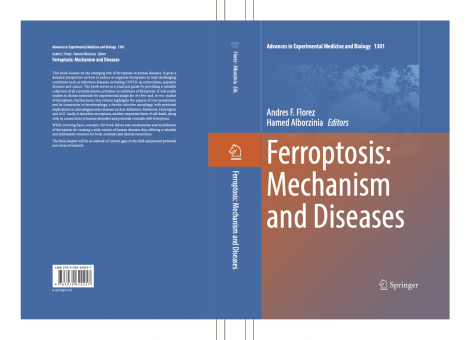
Hamed Alborzinia from Andreas Trumpp lab and his colleague Andres Florez Amaya of the Department of Molecular and Cellular Biology at Harvard University, published a book on ferroptosis entitled Ferroptosis: Mechanism and Diseases. Ferroptosis is a specific metabolic form of iron-mediated cell death that has recently been linked to a variety of diseases and patho-mechanisms. The main goal of this book -according to the authors- is to make ferroptosis quickly accessible, so anyone who dives into any of the chapters can readily understand the pathway. To start, foreword by Scott Dixon one of the scientists who discovered ferroptosis gives as strong motivation on why the study of ferroptosis is therapeutically promising. In the first chapter, the authors illustrate how ferroptosis is connected to other forms of cell death, which can facilitate the understanding and help integrate the information processed in the other chapters. The book dives into different pathologies, starting with pancreatic cancer as one of the hardest cancers to treat and that shows promise to be treated with ferroptosis induction. Infectious diseases, including COVID-19, and their connections with ferroptosis are addressed elegantly by the authors. In between, the role of iron and ferritinophagy which are becoming more and more crucial in explaining the ferroptotic mechanisms are described. The book also offers valuable collection of all currently known activators or inhibitors of ferroptosis. It will enable researchers to choose molecules for experimental design for in vitro and in vivo studies of ferroptosis. Finally, the authors explore the connection of ferroptosis to other cell death pathways such as necroptosis, some crosslinks might appear that are interesting not only biologically but therapeutically by using synergistic compounds to induce both pathways.
